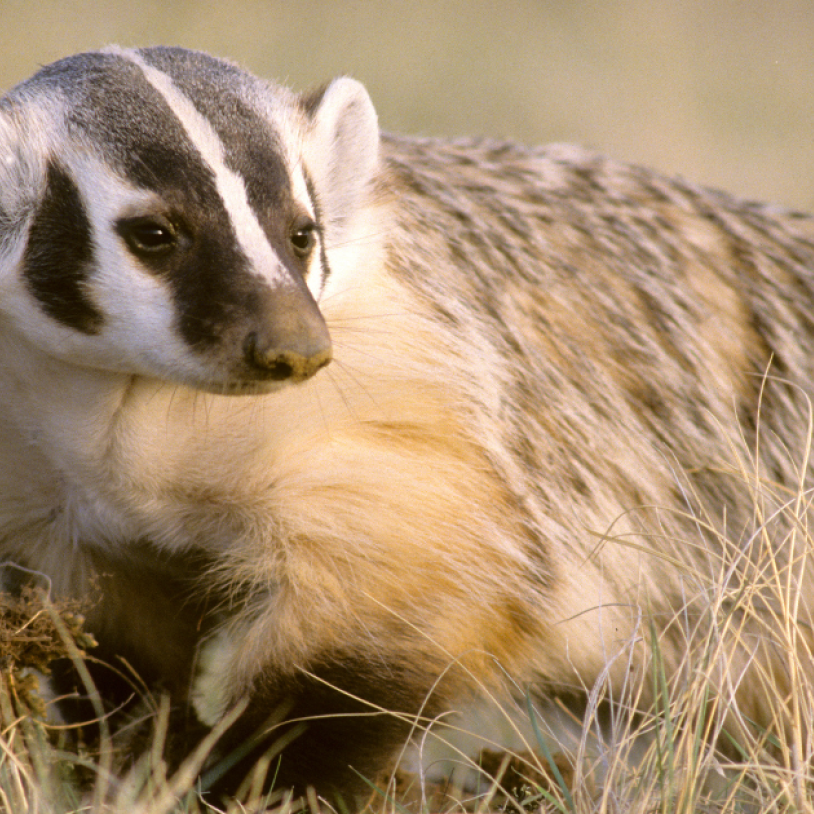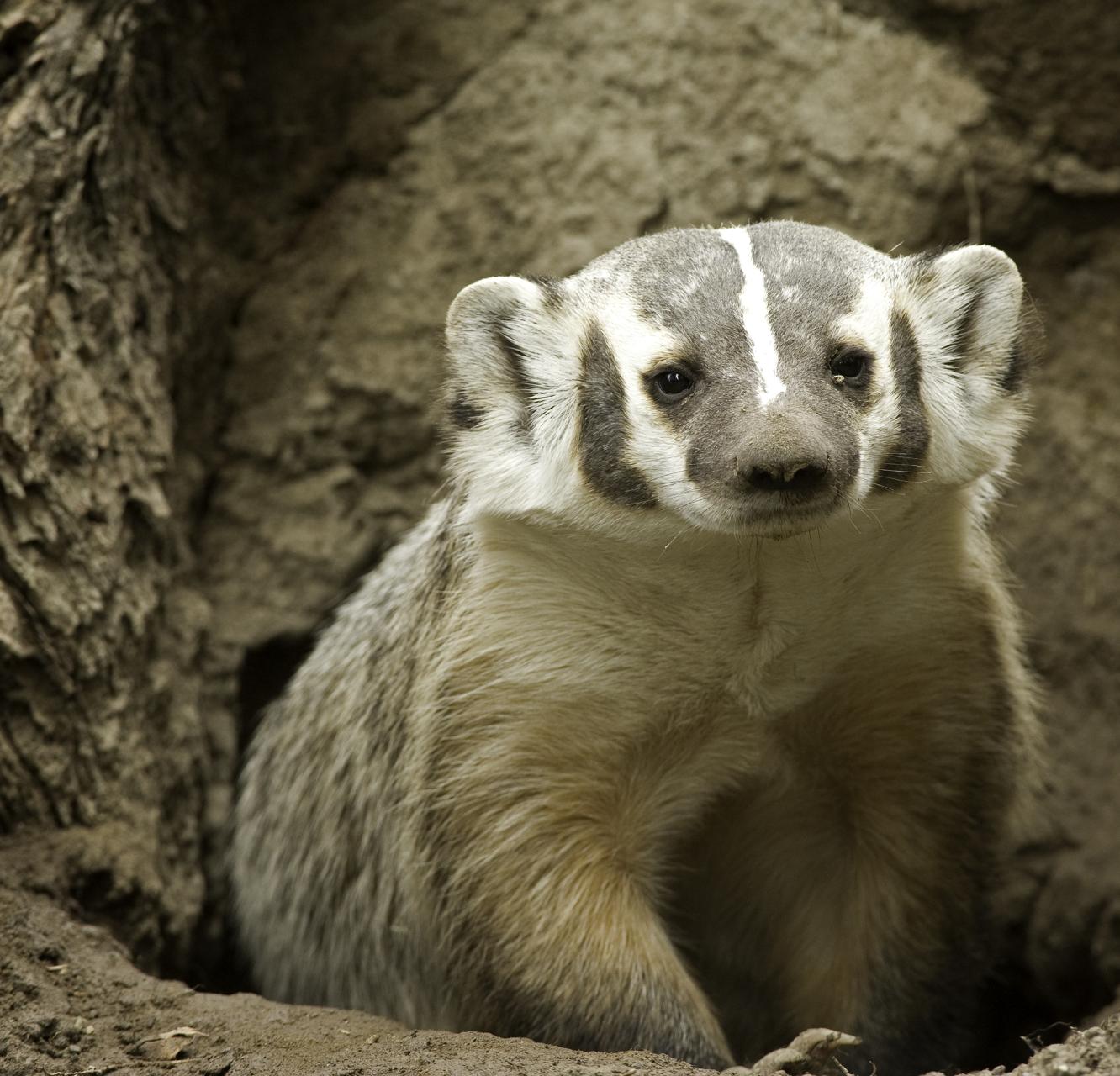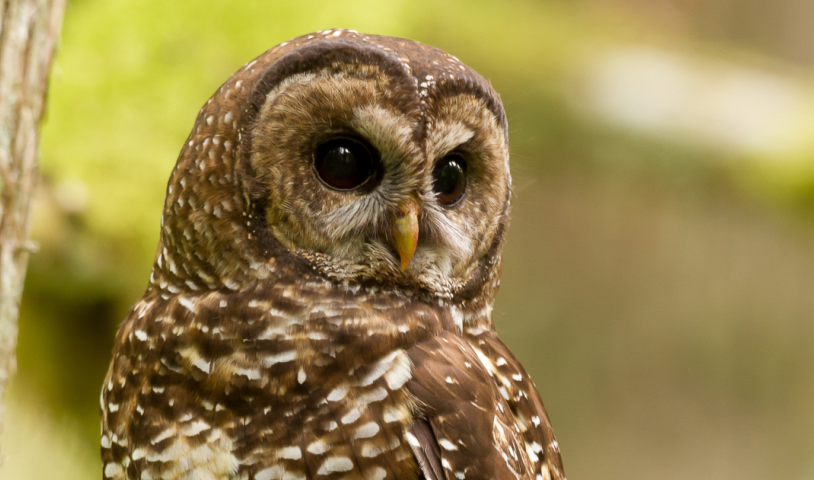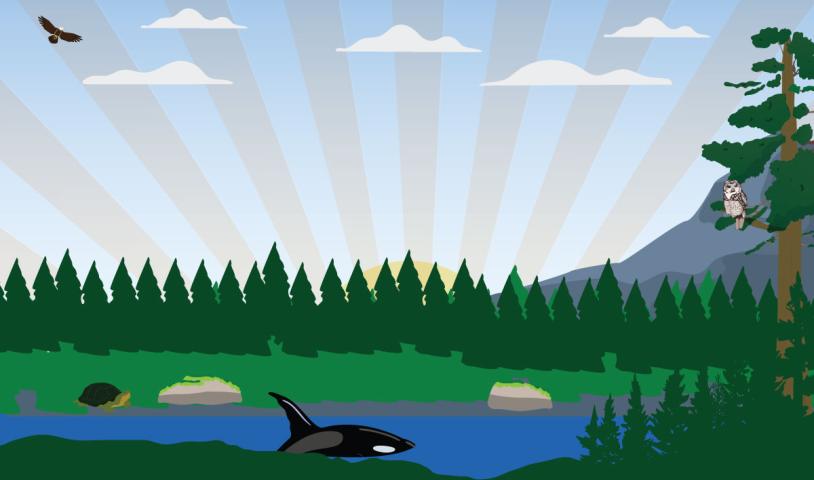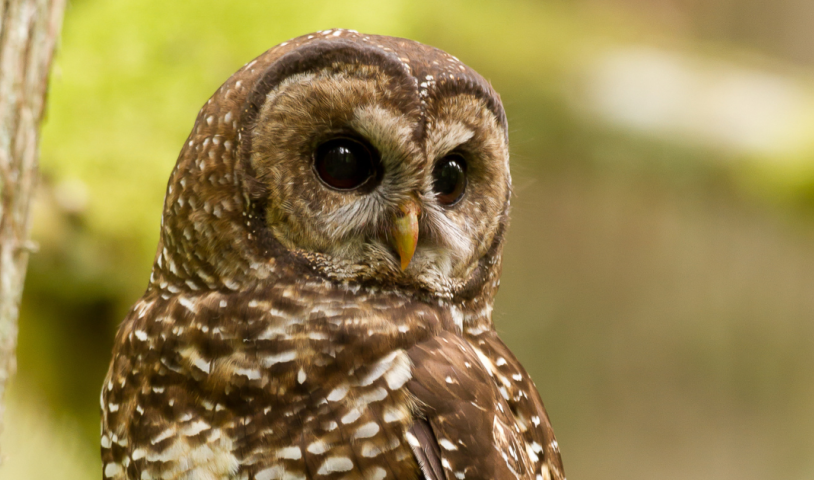Humans versus nature: the Sixth Extinction hits B.C.
Wednesday, April 22, 2015
From missing winters to disappearing wildlife, B.C. experts say the signs of the so-called Anthropocene Epoch are all around us
On January 26, 2015, the temperature in Vancouver hit a monthly record high of 14.3 degrees Celsius. That compares to the historical average of 6.3 degrees. Lower Mainland residents evidently enjoyed the unusually warm weather, posting to social media photos of patio drinks and flowers in full bloom. But spring arriving barely past the halfway point of winter sent other species into chaos.
On another unseasonably warm day earlier this April, the Georgia Straight travelled to a tributary of the Harrison River in the Fraser Valley. The patch of wetland is home to one of only six known colonies of Oregon spotted frogs in Canada. There, Monica Pearson, a biologist with the Vancouver-based research firm Balance Ecological, waded through tall grass and combed tiny streams for specimens of this creature, which is officially registered as endangered.
“Their breeding season changes, depending on the weather,” Pearson said. Rain instead of snow in January meant this region of the Fraser Valley was inundated with fresh water when that precipitation should have remained locked as snow pack, she explained. The flood sent female frogs searching for suitably shallow nesting sites in areas where there shouldn’t have been any water at all.
“The result of that unexpected weather pattern—exactly the kind of weather pattern we expect with climate change—is we had frogs breeding in the wrong spots,” Pearson continued. “Then, when it got cold again and temperatures kind of went back to normal, the water levels dropped and the eggs were all sitting high and dry.”
Unborn tadpoles were either washed downstream or baked in the sun. According to Pearson, the early arrival of spring adversely affected nearly a quarter of the 93 egg clusters laid at that site this year.
“The Oregon spotted frog is Canada’s most endangered amphibian,” Pearson emphasized. “And each of those [six] populations could potentially disappear over the span of a few years.”
How seven billion humans are collectively warming the planet is an invisible but devastating example of what scientists increasingly agree is the beginning of the Anthropocene: a proposed epoch defined by Homo sapiens overtaking nature as the dominant force on Earth.
Driving away from Vancouver earlier that morning, Pearson illustrated the extent of civilization’s influence with a more tangible example. Until 1924, the Sumas Prairie we traversed was Sumas Lake. Today, the lowland between Chilliwack and Abbotsford is a fertile basin that keeps Lower Mainland supermarkets filled with berries and other agricultural products. But frogs need wetlands to survive, she noted. And through much of the Fraser Valley, humans have separated the water from the land.
Part of a global phenomenon
Similar acts of habitat destruction have occurred throughout British Columbia and continue today. The Ministry of Environment's amphibian surveillance program warns 64 percent of frog species and 30 percent of salamanders in the province are listed as “species of conservation concern”. According to a 2011 government report, the B.C. Conservation Data Centre lists 390 animals and 1,207 plants as at risk (defined as “extirpated, endangered, threatened, or special concern”). They range from the northern leopard frog in the Creston Valley to caribou in the South Peace region of B.C.’s northeast.
Of 5,487 salmon populations that could be assessed in coastal waters in a 1996 study, 624 are at high risk of extinction, the report states; in 1996, 142 populations had already disappeared since recording began in the mid–20th century. In 2013, there was a shocking collapse of sea-star populations. Across the province, we’re losing songbirds, bats, and every species of bee we have. The causes aren’t always clear, often because there are multiple human factors at play. That makes it difficult to attribute a decline to just one influence. But more than a dozen B.C.-based scientists interviewed for this story unanimously agreed that human activities are the dominant forces putting species at risk.
What’s happening in the Pacific Northwest is a small part of a global phenomenon that’s come to be termed the “sixth extinction”. According to a July 2014 study published in the academic journal Science, between 11,000 and 58,000 species around the planet are lost every year. A further 33 percent of vertebrates and 40 percent of invertebrates are at risk or endangered.
“In the past 500 years,” the paper states, “humans have triggered a wave of extinction, threat, and local population declines that may be comparable in both rate and magnitude with the five previous mass extinctions of Earth’s history.”
Since the earliest land animals crawled from the oceans almost 500 million years ago, there have been at least 20 periods characterized by a major contraction of the number of species on Earth. Of those, only five are categorized as “mass extinctions”, a term applied conservatively to describe events or geologically brief continuums of events so devastating they eliminated the majority of life on Earth. The most recent and best known of the five occurred roughly 65 million years ago, when an asteroid struck the Earth to end the Cretaceous period and the age of the dinosaurs. Now the scientific community is debating whether we have entered—or when we did enter, in the opinions of many—the sixth great extinction and the onset of the Anthropocene.
As the wild salmon go, we go
When newcomers to Canada disembark airplanes at Vancouver International Airport, they’re transported back in time to an imagined First Nations settlement of the sort that once existed where B.C.’s coastal forest meets the Pacific Ocean. The art exhibit pays homage to both the indigenous people who populated this area beginning more than 10,000 years ago and the rich waters that remain as critical to British Columbians’ welfare today as they were then.
In the mid 1980s, Alexandra Morton was similarly drawn to the region for its marine life and especially its whales, she recalled in a telephone interview. But shortly after she relocated from California to Echo Bay on the north end of Vancouver Island, Morton said, her attention was pulled to salmon, a species for which conservation efforts became her life’s work.
In the late 1980s, industrial fish farms moved into the Broughton Archipelago, Morton said. Not long after, the densely packed enclosures became breeding grounds for sea lice.
“There was phenomenal fishing in those inlets,” she continued. “I lived in a floating house and the herring were all over, the diving birds were sitting on my floats. And when salmon farms came in, that ended.”
Twenty years later, Morton is still calling attention to the damage those farms inflict on wild salmon populations and the people who rely on them. “For coastal communities, as the wild salmon go, we go,” she said.
Jeffery Young, a scientist and policy analyst with the David Suzuki Foundation, told the Straight that assessing B.C.’s salmon populations is a complicated task. But he added that the overarching trends are negative.
“Some of the most significant declines tend to be in sockeye salmon, coho, and chinook, particularly in the southern portion of the province,” he said. “It’s death by a thousand cuts.”
Young explained that overfishing is just one threat faced by salmon in the Pacific Northwest. Another is the chance of a disease outbreak amplified by fish farms, he said. And then there are the less visible but likely more significant consequences of climate change.
According to Young, records for the Fraser River—a major spawning ground, rare in that it runs through a major city—show temperatures have risen since at least as far back as the mid–20th century. “Now we’re at a point where temperatures, on average, have increased about two degrees Celsius,” he said. “So far.”
Young noted that although the summer of 2014 saw more sockeye salmon return to the Fraser River than in any year in recent memory, it was only five years ago, in 2009, that the number of fish laying eggs in the Fraser was so low—less than 1.5 million—there were concerns sockeye stocks might never bounce back.
“Every four years, we may have a decent run of salmon, but the other three years are declining,” he said. “If climate change continues to move forward, it can only get worse.”
Another extinction scare occurred in B.C. waters in 2013. In August of that year, Chris Harley, an associate professor in UBC’s department of zoology, joined researchers from Oregon to Alaska scrambling to explain the rapid collapse of sea-star populations.
“I visited five sites around Vancouver and four of them looked normal,” Harley said. “But the fifth site, where the previous year there had been about a thousand, it was down to one.”
Populations of the purple sea stars once ubiquitous on rocky Vancouver beaches remain devastated, and the exact causes of what happened are yet to be fully understood, Harley said.
The consensus that has emerged concerns what scientists are calling sea-star wasting syndrome, which, according to a December 2014 paper published in the Proceedings of the National Academy of Sciences, is associated with a particular densovirus. But what triggered the disease to spread so rapidly—changes in the ocean’s temperature caused by global warming, decreases in salinity caused by increased glacial runoff, increases in acidity associated with oceans taking in more carbon pollution, or some combination of all three—scientists don’t know.
“It’s the military analogy of the threat multiplier,” Harley offered. “There have been disease outbreaks before the Anthropocene started. The thing is that we have now increased the risk factors for starting one.”
Like the sea-star collapse, scientists were for years confounded by similarly drastic declines in bee populations across North America. Mark Winston, a professor of apiculture and social insects at SFU, is one of the continent’s foremost experts on the topic. In a telephone interview, he told the Straight that colony-collapse disorder, as the problem came to be termed, is the result of a long list of human-related influences.
Habitat loss, the overuse of pesticides, nutritional problems related to the rise of monocrop agriculture, and the introduction of pests such as the varroa parasitic mite have all played a role, Winston said. He noted the rate of annual colony collapse has diminished in recent years, but only thanks to Herculean efforts by beekeepers and agriculturalists.
“We have probably gone beyond that tipping point where there is an acceptable level of an impact on bees,” Winston said. “It has stabilized, but at an unacceptable level. About a third of honeybees die every year.”
He emphasized the potential loss of bees is not just an issue for nature lovers. “Probably about a third of the food that we eat relies on bee pollination,” Winston said. “So while we wouldn’t starve to death, necessarily, we would have a severely diminished diet.”
Protection without enforcement
The Ministry of Environment did not make a representative available for an interview about political conservation efforts. That office, as well as the Ministry of Forests, Lands and Natural Resource Operations, declined to make government scientists available for interviews about specific species.
In Canada, there is federal legislation designed to protect endangered animals. The Species at Risk Act was passed in 2002. However, critics such as Ecojustice charge the Conservative government neglects to enforce its provisions unless compelled to. (For example, in February 2014, a federal court ruled Environment Canada had unlawfully failed to produce recovery strategies for species put at risk by the development of the Enbridge Northern Gateway pipeline project.)
At the provincial level, the 1996 Wildlife Act forbids the hunting of endangered animals. There’s also a 2011 policy document described as “A Five-Year Plan for Species at Risk”. In addition, there are more than 170 species-specific “recovery strategy management plans”, such as one implemented in 2012 to save the Fraser Valley’s Oregon spotted frogs.
But Gwen Barlee, policy director of the Wilderness Committee, criticized those documents as lacking legal measures required for enforcement. She emphasized that B.C. is one of only two provinces in Canada that lack their own endangered-species act. (The other is Alberta.)
“You want to have legislation that enshrines the principle that endangered species come from endangered ecosystems,” Barlee said in a telephone interview. “Right now, we have about 14 percent of the province that’s set aside as protected areas. That’s not enough to protect biodiversity; that’s not enough to protect species at risk. In British Columbia, we probably need to set aside about 50 percent of the land base.”
The executive director of the Pacific Institute for Climate Solutions at the University of Victoria, Thomas Pedersen, said it is the problem of habitat loss that conservation efforts must address.
“If you take a big chunk of northern B.C. forest and you run a series of roads across it, you fundamentally change the ability of animals to migrate,” he explained. “Even though you might only have lost 0.1 percent of your habitat to those roads, the impact is much larger than that. And so you need to preserve the integrity of large swaths of ecosystem landscape. And that is something that we are very poor at doing.”
The government’s 2011 report on at-risk species makes similar recommendations. It warns that to save the 1,597 animals deemed a concern, the province must shift away from “overlapping initiatives” targeting individual organisms and instead consider landscapes as a whole.
Disconnected conservation
The province’s lone Green Party MLA, Andrew Weaver, said the risks of conservation policies crafted in isolation from one another were laid bare in a 2015 controversy concerning the management of caribou in northern B.C.
In January, the Ministry of Forests, Lands and Natural Resource Operations announced plans to cull 184 wolves per year for the next five years in the South Selkirk Mountains and the South Peace region. According to a government release, the predators are hunting eight herds of caribou to the point there is a risk they could be wiped out.
Weaver, a former member of the UN’s Intergovernmental Panel on Climate Change, initially opposed the wolf hunt. He argued it is not wolves but habitat destruction that is the root cause of the caribou’s dwindling numbers. Weaver said he stands by that argument but, after reviewing information provided by the Liberal government, has since accepted that a wolf cull is necessary to save the caribou, regardless of humans’ role in their predicament.
Weaver explained the potential consequences of this sort of policy through a children’s story from the collection of Dr. Theophrastus Seuss.
“A king loves cheese so much that his castle gets infested with mice,” he began. Hoping to solve the infestation, the king introduces cats into his home. Sure enough, the cats run off the mice. But left without a predator, it’s not long before the cats overrun the castle. Dogs are brought in next, and they scare away the cats. Then lions are imported in an effort to control the dogs, and then elephants to deal with the lion problem. Finally, when the new pachyderm population grows unmanageable, the king orders his servants to bring mice into his castle.
“It’s the same with this caribou issue,” Weaver concluded. “We created the problem and now we’ve gone and culled wolves as a means to save a couple of caribou herds that are about to go extinct. Well, if you cull wolves, you might be creating another problem, and who knows what that will be.”
The international scientific community, justifiably, takes many years to agree on the declaration of a new epoch. Although mentions of the Anthropocene already appear in scientific journals, its existence has yet to be made official by the International Commission on Stratigraphy and its parent organization, the International Union of Geological Sciences.
UVic’s Pedersen recounted the moment he realized the significance of the onset of a new epoch. It was 2000, and he was in Cuernavaca, Mexico, having breakfast with a Dutch atmospheric chemist and Nobel laureate named Paul Crutzen, the man now largely credited for the scientific community’s adoption of the term Anthropocene.
“I remember him posing the question to me: ‘I’m thinking of calling this new era we’re in, where humans are now radically changing planet Earth, the Anthropocene. How does that hit you?’ ” Pedersen recounted.
“It hit me pretty hard,” he said. “That the dominant geological agent is no longer Mother Nature. It is us.”
Photo: Oregon spotted frog. Isabelle Groc
